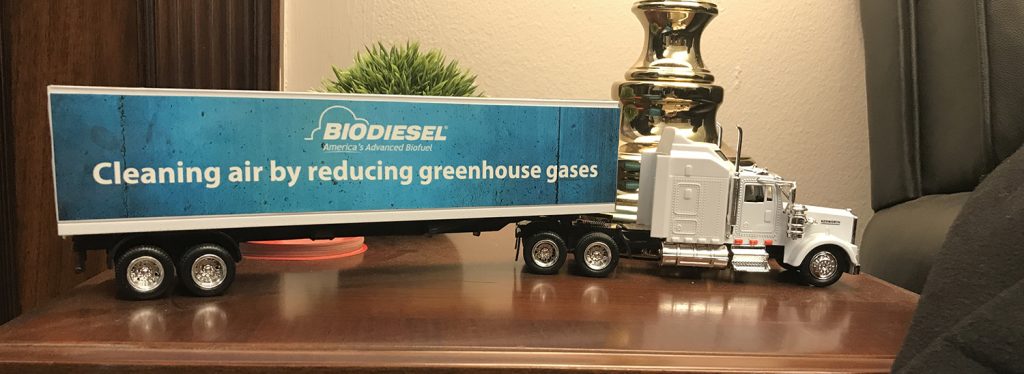A passion for environmental education – paired with an interest in technology – led Pat Sullivan to be elected as a Minnesota Soybean Research and Promotion Council (MSR&PC) board member four years ago. Sullivan raises soybeans and corn with his father and two brothers on their farm in Franklin, Minn., while also raising between 40 and 100 acres of peas for canning. Sullivan is currently a District 5 & 6 Representative and the chairman of the Environmental Stewardship action team, with his sights set on the future of farming.
“Our goal for the Environmental Stewardship action team is to be the best stewards of the land as possible. Our dollars go toward environmental education, research and improvement,” says Sullivan. “I have three kids of my own and my brothers have children as well. We want to have our farm around for generations to come, and that means making sustainable decisions.”

While keeping future generations in mind, Sullivan and his team have most recently been investing checkoff dollars into further research for water quality and buffers in Minnesota. The Environmental Stewardship action team looks at all types of conservation practices and their impact across different areas of the state. Ultimately, the team’s goal is to conduct research, analyze it and bring the best solution to the table.
“We’re continuously seeking to understand what works, what doesn’t work, what could be better, and how could we change it,” says Sullivan. “We conduct research to discover what’s the best buffer and what alternatives exist.”
Water quality is a major concern in Minnesota. Minnesota has 80 major watersheds, and the state has adapted watershed resolution and protection strategies (WRAPS) for all major watersheds. Knowing this and taking this into consideration, another project Sullivan and his team have spearheaded is the WRAPS Handbook. The goal of the handbook is to help Minnesota soybean farmers learn how they can best achieve water quality standards that meet total maximum daily loads of pollutants in Minnesota waters. Funded by soybean checkoff dollars, the WRAPS Handbook outlines guidelines for farmers to follow in accordance with WRAPS.
“As farmers, we have a big role to play in how the WRAPS process plays out,” says Sullivan. “The process can be overwhelming at times. That’s why we came up with the WRAPS Handbook, which is a quick guide to help farmers understand how the process works and why, and how farmers can get involved.”






